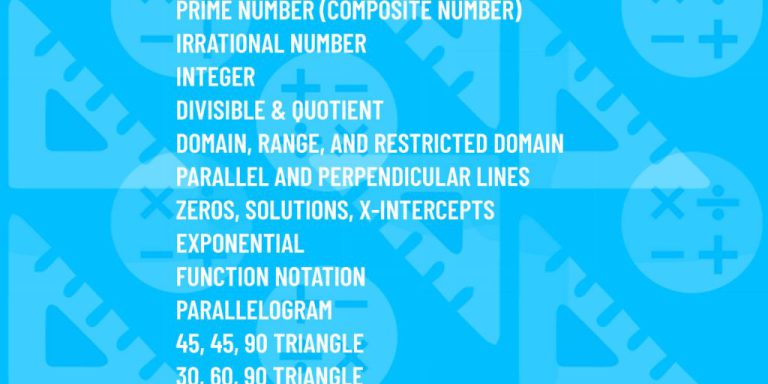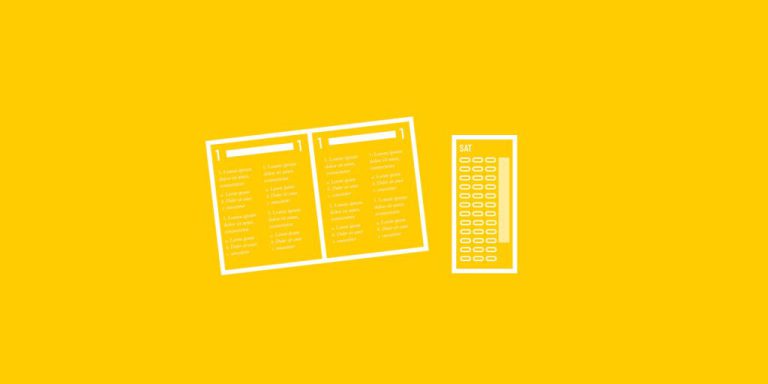The ACT Science section requires you to understand, interpret and infer information given in tables and various types of graphs. Today we are going to talk about 5 strategies that help you determine what to pay attention to and how to get these questions correct.
#1 Read the labels and units
You do not want to spend too much time looking at a table or a graph before you get to the questions; to save time, read the labels and units.
When you come across a graph or table, read the title as well as any additional labels like on the x- or y-axis or column headers. As you are reading, note the units used. Sometimes, a question will ask for an amount of something per 100mL of water but the table or graph shows values per 50mL. Converting the values is simple, but the converting, of course, is not the challenge…the challenge is knowing that you need to convert the values!
When you get to the questions, knowing the basic labels and units on the graphs/tables can help you quickly decide on an answer choice.
When you get to the questions, knowing the basic labels and units on the graphs/tables can help you quickly decide on an answer choice. For example, maybe you are not sure exactly which table or graph has the information you need to answer a question, or you are not sure what the correct unit is. Well, if a quick look at the answers choices shows, say, kilogram per cubic meter, then all you have to find is the table or graph that has values with the unit kilogram per cubic meter and you are well on your way to the answer. So, pay attention to those units!
#2 Pay attention to types of change
Pay attention to whether a table or graph is showing independent amounts or cumulative amounts of change.
For example, you could see cumulative change in a stacked bar graph, and independent change in a line graph. Also pay attention to how much the amounts are changing. Often you will be asked which of something changed the least or the most. Keep in mind that a horizontal line – even with a higher y-value – can show that something is remaining constant, or not changing, even compared to a line or curve with a lower y-value.
Pay attention to how much the amounts are changing. Often you will be asked which of something changed the least or the most.
When a line or curve increases or decreases rapidly – there is a greater slope or steepness to the line or curve – then this indicates that something has changed significantly. Keep in mind that if the question asks which of something changed the most, this could be an increase or decrease in change, so don’t ignore lines, curves, or values in a table that are decreasing; these could represent the greatest amount of change.
#3 Compare tables and graphs
Remember #1… the reason you need to pay attention to the labels on the tables and graphs is because sometimes you need to compare the information found in various tables and graphs.
Note what makes the tables the same and what makes them different. Think about each as a paragraph: when you read, you should check in with yourself and make sure that you understand the main idea of each paragraph. Well, the same is true with data representation. You look at it and ask yourself, “What is this showing me?”
Note what makes the tables the same and what makes them different. Ask yourself, “What is this showing me?”
Maybe you come across two graphs, one for experiment 1 and the next graph for experiment 2. So then you ask yourself, “What is different and the same from experiment 1 to experiment 2?” Keep the questions broad – main idea, changes in variable or units – and keep your answers simple as well. Just as I say you should only return to a Reading passage with a clear purpose, well, the same is true for a table or graph. You can stare at it all day long, but the information is not going to jump out at you. You need to be looking for something!
How to Ace the SAT Reading Section
#4 Let the Questions Lead You
So maybe you are not so sure what the “something” is that you are looking for in the table or graph. You do not have a purpose. That’s what the questions are for! ACT Science questions are carefully designed to show you where to look–so look for mentions of the units you noted when you looked at the charts and graphs, as well as noticing when the test cues you to look at a certain figure or experiment.
Sometimes, if you’re not sure what’s going on in the question, the answer choices can guide you, giving you clues as to what you’re supposed to be looking at. Always look for what’s true on the chart or graph, and use that to do process of elimination: if it isn’t true, it can’t be the right answer, no matter how good it sounds.
4 Reading Strategies for Slow Readers
#5 Make inferences – what can you conclude?
Often the ACT will ask you to infer a conclusion or make a prediction based on the table, graph, and passage. But you will also notice that every once in a while, there will be an answer choice like “not enough information” or “the table/graph does not support…”.
Now, in the math section you should be suspicious of the “not enough information” answer choice, but when interpreting tables and graphs in the ACT Science section this choice is a valid answer – or an equally possible answer.
So how do you know what you can conclude? Ask yourself: is there a pattern or trend in the data that will allow you to infer or make a prediction? Does the data support what you’re being asked to conclude or infer? You need to keep a critical eye and be sure that you’re inferring a conclusion that is aligned with what the data will support. When in doubt, the smallest possible inference is likely the right answer.
You need to keep a critical eye and be sure that you are inferring a conclusion that is aligned with what the data will support.
5 Strategies for Reading Tables and Graphs
Let’s recap. You need to 1) pay attention to the labels and units on the tables and graphs, 2) note increases, decreases, and how values are changing, 3) make sure that you understand the main idea of each table and graph, as well as how they are the same and different from one another, 4) be guided by the questions, and 5) ask yourself: Is there a pattern or trend in the data that will allow you to infer or make a prediction? Does the data support what you are being asked to conclude or infer? And don’t be afraid to select the “not enough information” answer.
Keep reading and pay attention to charts and graphs that you see in news articles. Perhaps you’ll even find a few places where conclusions are drawn beyond what the data supports!
More SAT Reading Strategies:
How to Ace the SAT Reading Section
4 Reading Strategies for Slow Readers
3 Things to Know When Switching from the SAT to the ACT













